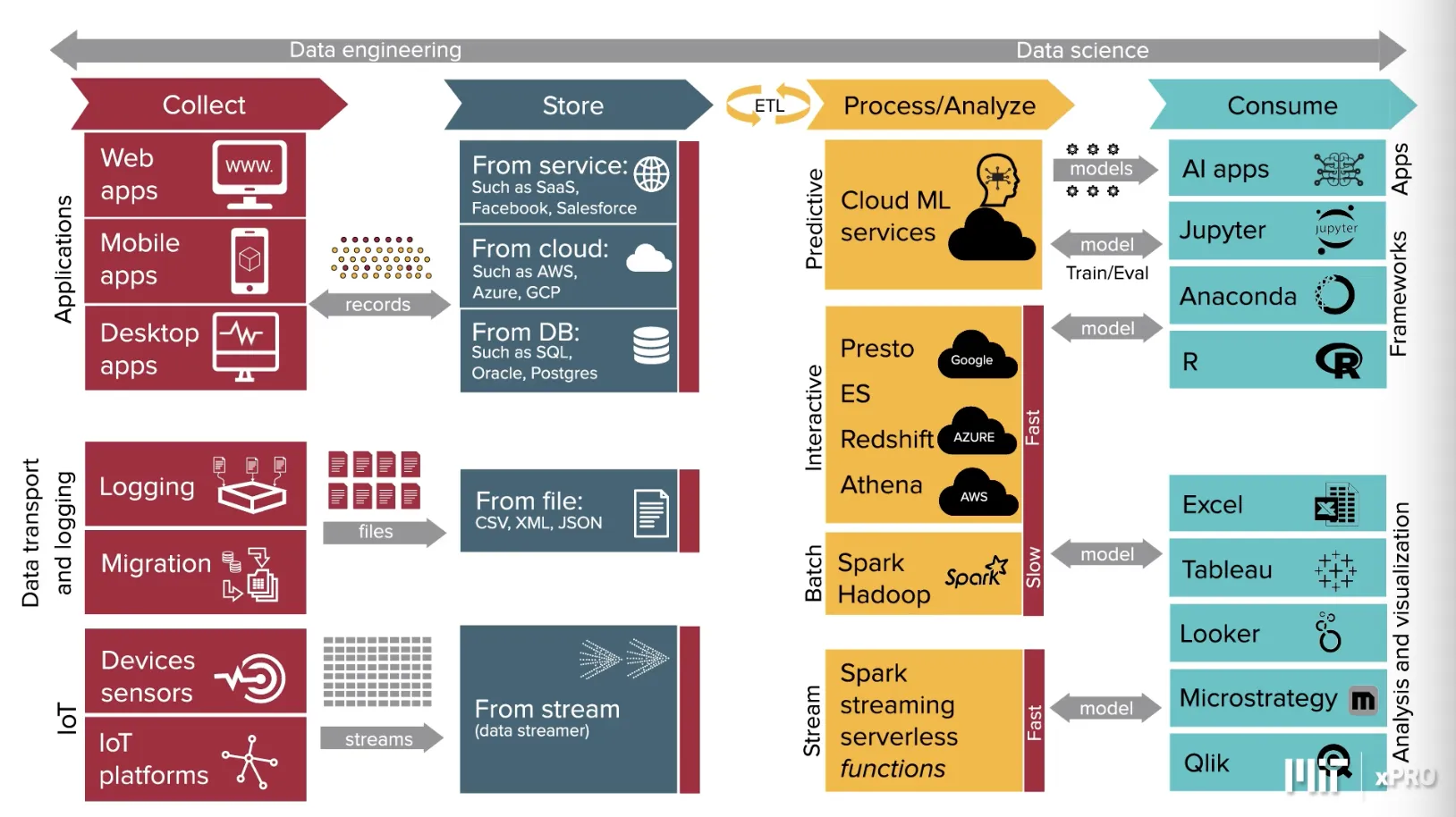Extract, Transform, Load (ETL)
Introduction
According to Wikipedia:
In computing, extract, transform, load (ETL) is a three-phase process where data is extracted, transformed (cleaned, sanitized, scrubbed) and loaded into an output data container. The data can be collated from one or more sources and it can also be output to one or more destinations. ETL processing is typically executed using software applications but it can also be done manually by system operators. ETL software typically automates the entire process and can be run manually or on reoccurring schedules either as single jobs or aggregated into a batch of jobs.
Role of ETL in Data Engineering
Hierarchy of Data Proceessing
This is the ordered list of proceessing tasks for data applications. The lowest ones are essentially lower abstractions.
- Collect: Instrumentation, logging, sensors, external data, user generated content.
- Move/Store: Reliable data flow, infrastructure, pipelines, ETL, structured and unstructured data storage.
- Explore/Transform: Cleaning, anomaly detection, preperation.
- Aggregate/Label: Analytics, metrics, segments, aggregates, features, training data
- Learn/Optimize: A/B tessting, experimentation, simple ML algorithms
- AI: AI and Deep Learning Models
When it comes to ETL we're going through the bottom layers of the hierarchy.
ETL Architecture
flowchart LR
A[Data Sources] -->|Extract| B
B[Servers] -->|Transform| B
B -->|Load| D[Database]Extract
The extract process is any standardized process where data sources are polled for any new data. Typically some filtering is performed in this process to save on the amount of data to download and processing in next steps. The features of the data are usually already known, otherwise a more brute force method of downloading most of the updated data can be used and transforms can attempt to download the rest
Transform
Then the data must be transformed into a format that works for the data systems it must be loaded into. This involves:
- Filtering out what isn't needed.
- Transforming data formats to be consisted with rest of data system.
- Repairing/Removing missing data.
- Restructuring data to fit with pre-existing corpus.
- Deriving columns
- Aggregation
- Joins
Load
Finally, the data is loaded into the database system. The data should by now be transformed into the state it needs to be able to be stored into the database system. Maybe some minor changes need to be made between the code and database insert procedures. This step then consistently loads the data into the database.
Landscape of ETL Processes
As can be seen in the diagram below, the entire landscape of ETL is quite expansive. Here we see many ways to extract data from their sources, transform systems to change the data to the format it's expected, and load procedures into various data storage endpoints. Finally you see on the right the various ways to consume the ETL data.

ETL Software
Apache NiFi
NiFi by the Apache Software Foundation is a data pipeline and transformation tool. It creates scalable directed graphs for data routing, transformation and system mediation logic. It creates data pipelines and transformations on the data flowing through that pipeline.